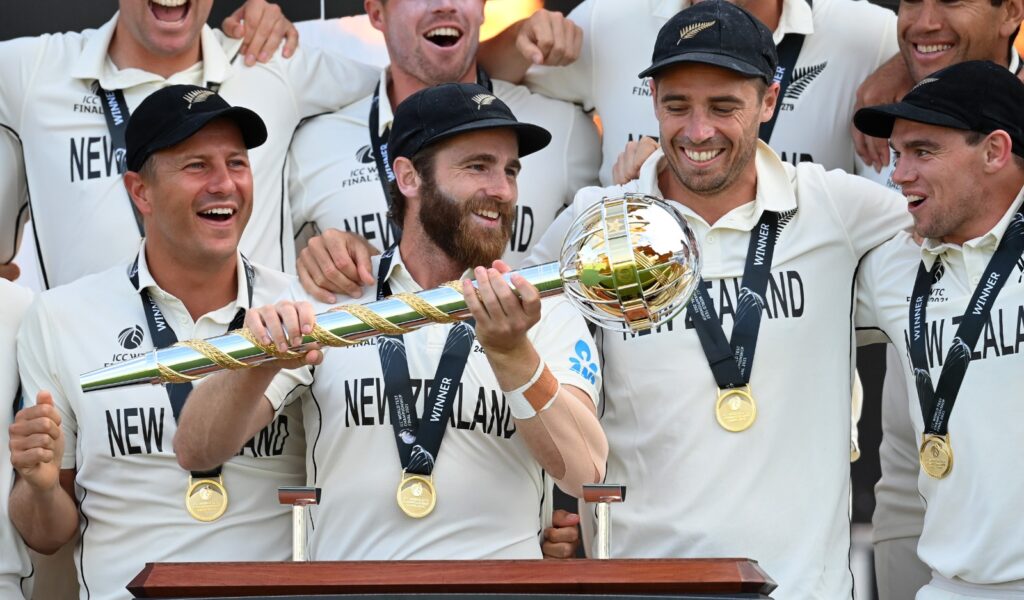
It was one of the best Wimbledon finals in history. Andy Roddick threw everything he had at Roger Federer and played the match of his life in the 2009 final. And yet he ended up second-best. Roddick’s tears at the prize-giving ceremony resonated with every member of the audience. Here was a champion who had done the sport proud. He had fought, and stayed true, but was eventually outclassed in a hard-fought final by perhaps the greatest to have played the sport. Roddick wasn’t disgraced. His quest continued.
There are others like Roddick. Ivan Lendl, one of the greatest of all time, immediately comes to mind. Lendl never won Wimbledon. The same applies for Cristiano Ronaldo in the World Cup. He is arguably one of the best the world has seen, and yet hasn’t won the World Cup, which Lionel Messi has – something that will always put a question mark on his legacy.
That’s what happened for India and Virat Kohli in the World Test Championship. India, under Kohli, had to settle for second-best in 2021, for the third time in four years. Despite losing the toss, India threw everything they had into the contest. They started superbly in dreaded batting conditions against a fantastic new-ball attack, and won Day 1 as Kohli and Ajinkya [Rahane] played with caution. Even when Kyle Jamieson bowled a superb spell the next morning to give New Zealand the upper hand, India fought back with [Mohammed] Shami and Ishant [Sharma] bowling their hearts out.
Yet again, it was the New Zealand tail that hurt India. But at the start of Day 6, because of all the rain, few would have fancied a New Zealand win. India, by all means, was in the contest. That the draw was the most likely result at the start of the final day was borne out to me when Michael Holding, who has given cricket a new meaning with his pronouncements against racial abuse, told me, “I have not even watched the WTC final because of all the rain.”
Holding, it was clear, wasn’t seeing much chance of a result. Just like in the World Cup semi-final of 2019, lack of application in the first two hours on the final day hurt India badly. Kohli was out to a widish delivery outside off stump, Cheteshwar Pujara edged in the very next Jamieson over, and Rahane played down the leg side to hand New Zealand the momentum. Rishabh Pant was indiscreet, and Ravindra Jadeja fell to a well-laid trap. One bad session cost India the WTC, like it had the 2019 World Cup.
Two years of solid Test cricket can’t be undone by one bad session. Surely not. But why does it happen repeatedly? Are there lessons to be learnt? Mistakes have to be rectified, and changes made to ensure the same errors of judgement aren’t repeated in the final starting today. That’s the moot point. But why does it happen repeatedly? How is it that India continues to underperform in a big final?
A deep dive into India’s performances throw up some key findings. Repeatedly, the opposition tail has hurt India. Despite having a well-rounded bowling attack, India could not polish off the lower order and ended up conceding valuable runs, which in turn proved decisive. Sam Curran hurt them in England in 2018, Jamieson did so in New Zealand in 2020, and both Jamieson and Tim Southee salted the wounds in the World Test Championship final in 2021.

What could have been an Indian lead of 10–15 runs ended up being a deficit of 32, which eventually proved critical. There is a huge difference between a chase of 139 and a chase of 180. Had India not conceded the lead, the outcome could well have been different. However, what-ifs don’t make history. Ground realities do. And the reality is that India wasn’t able to close out the New Zealand innings.
The second point that we need to make is that while we are conceding far too many to the opposition tail, our lower order hardly ever makes a telling contribution in a final. In the WTC final, India lost the last three wickets in the first innings in a matter of four balls. While it isn’t always fair to blame the tail-end batters when the top order couldn’t fire, in a close contest, those 15–20 runs become vital. The Indian tail can certainly play their part by scoring a few.
In sport, the best challenge themselves every single day. Rafael Nadal, for example, still wants to push his body one final time in 2024. The hunger is relentless, and that’s what makes him the greatest champion of all. That’s what we expect from Rohit Sharma and his team. And we have seen what the youth are capable of in the series against Australia in 2021. That’s what the process is all about. And that’s how you will keep knocking on the doors, and be there or thereabouts.
For 20 years, New Zealand persevered. Kane Williamson kept challenging his boys to stand tall and, in doing so, discovered match-winners who won him the first WTC. For years, Kohli’s India came close, in a Champions Trophy final (2017) and a World Cup semi (2019). Rohit, as vice-captain, played some stellar hands.
Now, it is his turn. To push his boys for the next five days to stay true to the process. To the years of hard work and dedication. Not fall prey to pressure. And if he does so, there is no reason why India can’t win the critical moments in the game, and their first ICC trophy in a decade.
Also Read: Virat Kohli and the Missing One Percent



